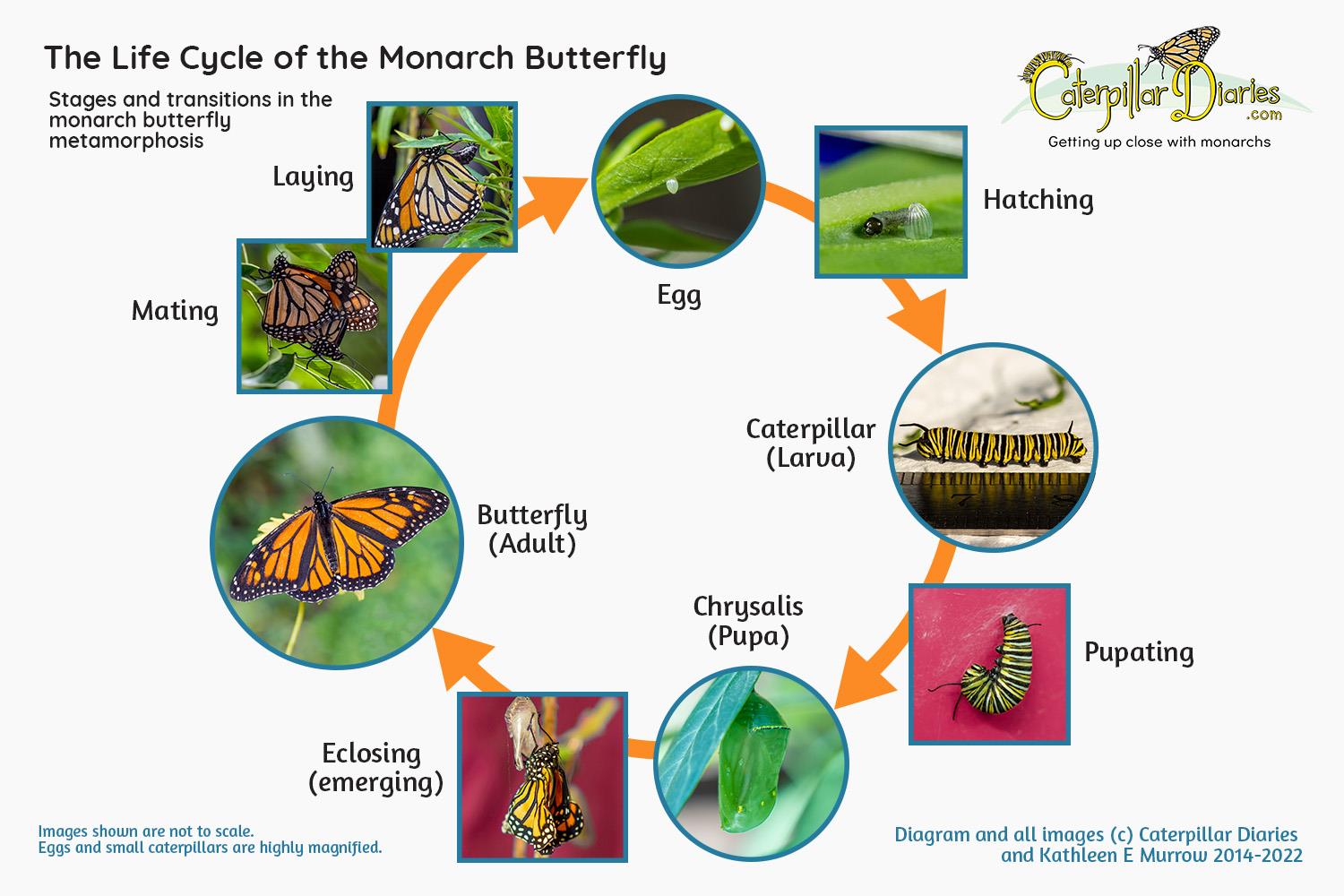
As humans grow from babies to adults, we look very similar in shape and anatomy (body parts) throughout our lives. Our arms and legs get longer, we grow taller, our faces become more oval than round, and so on, but we are still recognisably human. This is similarly so for other mammals (animals that feed their babies milk) and other vertebrates (animals with backbones), but it is not so for butterflies. Butterflies and many other insects change completely from birth to adulthood. This change is called “complete metamorphosis”. Butterflies change from egg, to caterpillar, to chrysalis, to butterfly – and each stage looks very different.
The monarch is beautiful to look at in all of its life cycle stages, which makes it a great example for learning about the butterfly (and insect) life cycle. In many cases, we are also able to experience the monarch’s life cycle first-hand, by observing their growth and changes in our gardens or in our classrooms. Making these observations and reporting our findings can make us “citizen scientists”.
In the following pages, Caterpillar Diaries presents a close-up look at each stage of the monarch’s life cycle, with written information, photos, videos, diagrams, and downloadable resources. Start here, at the section on laying eggs, or click the Next button below.
